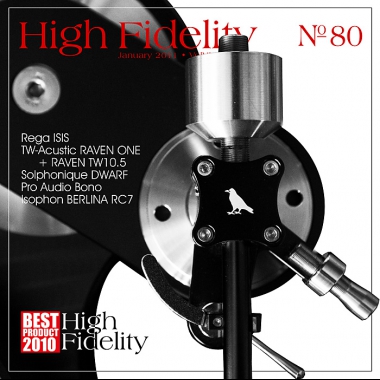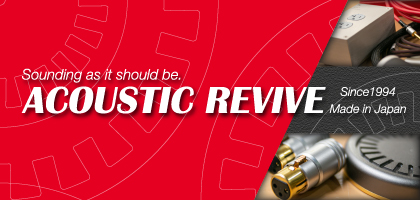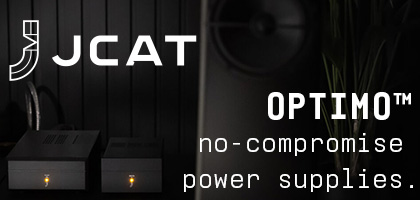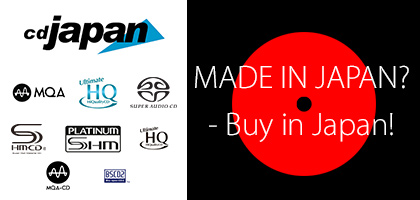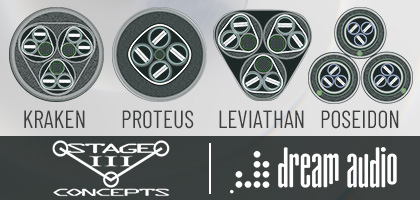AUDIO SHOW 2010 ONCE AGAIN

After the reportage from the Audio Show, posted on November 16th on “High Fidelity”, so almost live, a multitude of emails came. You wrote about that what you liked or disliked, what you can “feel” in my text, and what not, etc. Many emails and even more viewpoints... It can be clearly seen, that the show is a hot topic, an important event. There is need to understand, to rationalize what has happened there. And because it can be seen, that you want me to clear things up, I will try to my best to achieve that. But I would like to start with some representative emails, which will show what I would like to say:
Hello again!
For a person outside the branch it is a quite strange (but also a very nice) feeling to see one’s text being published in your valuable magazine, so nice, that there is a risk that I will write you again after next year’s edition of the AS :)
I am very happy, that – while not agreeing with a lot of what I stated – you considered my viewpoint as provoking a discussion! I really cared for that.
I concur in 100% with what you wrote about a certain randomness and coincidence with our assessments – depending on the music playing at a given exposition during our visit there (often from a disc brought by one of the listeners, with various quality, once better, once worse), on the amount of people in the room or even on what we listened to just beforehand.
You surprised me with a good opinion about the presentation of Linn – because in my opinion the sound there was not so good... But maybe I was not lucky in terms of music presented there? But because I fully agree with you, that the digital age is coming, I promised myself, that I will give Linn another chance (their DS player) and I have a presentation scheduled at home. We will see, we will hear :)
Regarding file players, to date I heard only the Olive at Hans van der Brug (at home, not at AS), but there Shanling products stuffed between the source and the loudspeakers disallow a honest evaluation. A pity, because Hans gathered really exceptional set of loudspeakers - Ferguson Hill, Genesis (my favorite, at least with Hans’ electronics) and those little Australian cranks Solophonique – what a stereophony... how do they do that???
Regards,
J.

Dear Mr. Editor!
I am a regular reader of High Fidelity and I really appreciate its work to shed light among the Polish music and audio gear lovers. It is the first time that I am writing you, provoked on one hand by the fact that you are the unquestionable authority shaping the opinion about “audiophility” of various devices, on the other by the frustration gathered while visiting this year’s Audio Show, and in consequence the need to subdue myself to the evaluation of audiophility, as the last element in the audiophile chain.
Ad rem: I consider myself a person listening a lot to music (I own a few hundreds CDs and vinyl records, which I do not allow to get dusted on the shelf :)) – and well, listening to music, and not some sounds or devices on their own. I have of course my preferences regarding the sound, so I have a certain, quite precisely defined way of presentation of the music (sound) that I like, prefer and better during the years of building my audio system (I summarize below a few of my impressions from the AS, so that you have a picture of what I like).
However in conversations with many exhibitors, it turned out, that I am no audiophile but rather a profane, ignorant and in addition a nearly deaf one...
Why is it so? Because the kind of sound I prefer is not like the sound produced by the devices offered by the distributor in question. Almost each one of them thinks that his, and only his products, produce a sound that is true, close to the original and the Absolute – even if I (maybe due to a dysfunction of my organism, especially the ears) evidently hear, that that what the loudspeakers produce is a lousy, digital and colored imitation of the True Sound?
And even if my hearing is really dysfunctional, and the sound I regard as being truer isn’t that at all, why can’t I have this disability, and listen to what makes me happy? Why are the icons of the Polish hi-end scene (with all respect to their knowledge, achievements and engineering thoughts) like Mr. Waszczyszyn or Roger Adamek, when engaged in conversation just presumptuous arrogant people, deeming themselves “messiahs” and “belly buttons” of the world? Is it really a crime, that a man loves listening to music, and invests lots of time and effort to build HIS system, constructs it according to HIS OWN preferences, and not according to a vision of one or another authority? And again – is there no place for ones personal opinion in the audiophile world? Or if someone is a follower of Ancient Audio, for example, naming it the best audio system in the world (what – as each dogma – requires to be believed in, because it cannot be confirmed with my senses), then he must be deaf and should not be called an audiophile?
If this is the case, then I would like to change my description and be called for example the Hearing Impaired Lover of Two Channel Audio Reproductions.
I am very curious of your opinion on this topic, and count very much on a reply.
Regards,
Reader
(Name to the knowledge of the editorial staff)
P.S.
And now a few of my impressions from AS:
For me (with all the restrictions and limitations mentioned above) the sound of the show was the proposition of Hi-Fi Klub (VPI turntable with the Lyra Titan cartridge, VTL electronics with the 6550 tubes based monoblocks and Thiel CS 3.7 loudspeakers); to say it short – yes, a tube amplifier, but with the necessary dose of energy, and to achieve that you need rather a KT88 than a 300B. I must confess, that I am no fan of the 300B, and to date I have not heard a single amplifier featuring it, that I would like to take home (including the Ancient Audio, which I heard with the Harpia Grand 300B – brrrr...) – that was true until I visited the room of Mr. Gryglewski (JAG electronics), who succeeded in making a budget integrated amp (9000zl), based on the 300B (Full Music), which connected to loudspeakers he also made, using Goodmans wideband drivers and a small ribbon tweeter made me sit there for over an hour and listen. A revelation! The problem with the system is, that it is almost not repeatable – what elements (especially the loudspeakers) Mr. Dariusz finds, so the final sound.
Many disappointments – from the absurdly expensive Lyngdorf/Steinway system (which – as revealed by the expositor – could not handle the acoustics of the room with the curtains closed, and played only with them open (sic!)) and still the sound was quite bad, unless someone is a lover of an audiophile mass in a gothic church; in my opinion the constructor failed with the room acoustics correction system and with the gigantic open baffle speakers (I hear much better sounding open baffle speakers made by the Polish company Ardento from Bydgoszcz – here my full esteem to their constructor, who sais, that he does not know what happened, that those sound so well :)).
With regard to Mr. Adamek (RCM), I could not understand, why he defended the system with the Isophon loudspeakers, which sounded not so well, the sound seemed dry and thin, we could also hear some distortion on the bass – maybe caused by the listening room, but at the same time Mr. Adamek had a system with Zingali loudspeakers, which sounded just beautiful – with a full, natural sound, not disturbed by the acoustics of the room and the fact, that the sound path included the phonostage made by Mr. Adamek, which I tested at home, and of which I know the pros and cons.
Definitely a disappointment in the Ancient Audio room – the set with the digital source and monoblocks using the so called “devils” sounded in a muffled way, as if the loudspeakers would be covered by gauze, losing the sometimes needed sharpness and fire in the recordings; I do not know which element was responsible for that effect, but the “devil” monoblocks made by Mr. Głowiński from Łódź, combined with HUM loudspeakers, based on Lowther drivers, sounded much better (and not even mentioning how many times cheaper they are); in general I think, that the digital sources are still worse than their counterparts, and for me the only presentation really playing music, that used a digital source, was the Audiofast room (AudioResearch + Wilson Audio).
Other things worth noticing were the Viva amplifiers, loudspeakers Voxativ, Ktema and maybe Zeta Zero, but I did not have the chance to listen to them for longer than a moment.
Of course I have more observations, but I will not bother you with those any longer.

|
Hello!
The problem you are writing about is quite common, and frankly speaking I do not see a way to resolve it. The problem is, that reproducing a recording at home, regardless of the fact, if it is digital or analog, has nothing to do with a live event. And those will never be similar happenings. Those are separate worlds, parallel to each other, the home reproduction is coming closer to the live performance, but it will never reproduce it fully. Hence the statement “ideal sound” is only an approximation, a certain approach, with a large margin of, not even error, but option. A recording is just a certain way of creation, and that what we hear at home is just an attempt to reproduce that, what the sound engineer heard. This is the reason, that there are so many producers and each one of them claims, that he is right – and to some extent all of them are. All of them. They need to believe that what they do is right, or they will reach nothing – this is just how it is.
And to all that there is also the common profit – a shop will always want to sell what they carry. Or what they distribute, because most shops are at the same time distributors, so they like to have two margins instead of one...
My only advise would be as follows: please believe your own ears, try to attend as many listening sessions as possible, and try to reach your “own” sound, not caring about other people liking it or not.
Regards,
Wojciech Pacuła
Thank you very much for your response!
Frankly speaking I was worried, that you will ban me for the dose of skepticism and the lack of proper respect to recognized exhibitors... And you were able to support me and encourage me to search further and have my own opinion about the things I hear. This is very important. Unfortunately exchanging my thoughts with colleagues-audiophiles I have the impression, that many of them do not have their own ideas or taste, so they rely blindingly on the opinions of others. Because I would not even try to suggest, that they do not hear the differences...
Having the occasion I will allow myself another digression. I have the impression (confirmed by some of the exhibitors) that the acoustic environment on the AS was plain awful. I had the opportunity to hear some of the systems presented there in better acoustic conditions where they sounded much better. Is there no place in Poland, where the acoustics could be at least correct?
On the other hand this is not just a Polish problem – I was two or three years ago on a similar Audio Show (I do not remember the name) in Vienna, where it was also held in a hotel. And? The same thing – an acoustic nightmare, but you could notice a certain group of exhibitors having their systems sound way better than others. I noticed, that they all used old Garrard turntables (from the 300 and 400 series) as the sound source. I asked one of the exhibitors about this phenomenon – David Haigner, the manufacturer of very interesting loudspeakers (http://www.haigner.com), an engineer, musician and acoustic engineer (having “made” many concert halls in Austria). He said, that the Austrian presenters found out, that in this hotel, the problem is with one certain frequency range, and then with trial and error they found out, that old Garrard turntables eliminate that problem to a large extent (unfortunately I do not remember the detailed lesson about resonances, frequencies, standing waves and damping) – and this led to the popularity of those turntables on the show.
Regards,
And I wait impatiently for your reportage from the AS 2010!
J.

A few words from myself
First of all I would like to repeat what I wrote in the reportage from the show (HERE), and what is confirmed by the cited letters: the randomness of listening during the show is extremely high. Mr. Andrzej Kisiel counted, while correcting my reportage for the “Audio”, that when we assume, that three people per room can listen quite fine in the rooms of the Sobieski hotel, and we assume that each of those people would allow 5 minutes for a session (so not so much), then during two days of the show, each room could only be visited by 200 people. With 8000 visitors on the show!!! This makes clear, how the “listening sessions” look like during the show. Much better conditions are in the Kyriad hotel, but there, in the bigger rooms, the acoustics is even worse, at least in my opinion. This was shown clearly by the Lyngdorf (Steinway) room, where the room acoustics correction system could not manage the sound.
Improvement of acoustics was the mostly raised issue by the readers, those agreeing with me, and those not. The organizer of the show, Adam Mokrzycki, also took part in the discussion. He does not see the problem there. The rooms in the Sobieski hotel are similar to the rooms most audiophiles/music lovers have. They are not better and not worse. And according to him, large amount of people in the room works in their favor – according to him – damping the room even more. Well – my opinion about that is exactly the opposite. First of all – because most of the people listen in such conditions, their systems do not sound in the way they could, mostly they sound bad. The remark is fitting – those are “typical” listening conditions, but in my opinion those are “typically bad”. And the second issue – damping of the room. Yes, damping of the room is needed – but for God’s sake! – not in front of the loudspeakers, but behind them! Behind the listener we have to have something dissipating the sound. This is how the theory wants it, and how it should be based on my experience. And good damping is not always the way to success; usually it leads to muffling of the sound, “killing” it completely.
The more esteem should be given to those, who made their systems sound well, managed the issues and problems, finding the right combinations. And sometimes it was enough for them to be nice and know what they are talking about.
Because the way they treat the visitors and their problems, and the competence of the exhibitors, are one of the most often discussed issues I encountered in your emails. Those emails show the worst presentations, the dumbest and the most peculiar ones. But this is just how the show is. It is something volatile, something temporary. This is like entering a room, where there is high pressure – everything happens quicker, louder and in a less predictable way. This can be utilized. I would like to give you a way to resolve this conflict, which calls upon photography, but it is also fitting to listening to music.
My former professor, Michał Paweł Markowski, in his newest collection of essays, titled Słońce, możliwość, radość quotes an observation of Roland Barths, who distinguishes two dimensions of each photograph: studium, the whole cultural environment of the picture, its technical conditions and conventions, and punctum - that, what touches us in a photograph, what crosses the boundaries of the photographical stereotypes. He says “to understand studium we need a general knowledge about the things we see: studium accustoms us with the visible reality, softens its enigmaticalness. However to be moved, to be touched [...] by the punctum we only need to look […] (M.P. Markowski, Słońce, możliwość, radość, Czarne 2010, p. 137).
I mean, that during listening, and the show is one of the moments when listening is intensified, we have to decide first what we want. Maybe it will be enough to get carried away, and concentrate only on the things that fascinated us, leaving the rest aside. This can be a good solution. But a journalist cannot do it that way, he has to stick to the studium, what makes him loose the ability to amend it by the punctum. And I think, that most of the visitors does it the other way round – “punts” and does not “study”. This means, that we will differ in our opinions more that ever – well, it is about leaving logic in favor of emotion. And emotions are different in anyone. And this is the reason, that I did not want to discuss the sound of the show too much this year. Randomness does not go hand in hand with honesty. And I think, that this is true not only for me, but to a great extent for many of the visitors. So only the exchange of opinions makes sense, their comparison, and not making them a dogma.

And finally I would like to wish us all a fantastic new year!
Please remember, that audio is only a hobby, and that MUSIC is most important in all of it.
I thank you all for being with us and for supporting us – it is YOU we are making this magazine for.

Wojciech Pacuła
Editor in Chief
|
 Contents
Contents

